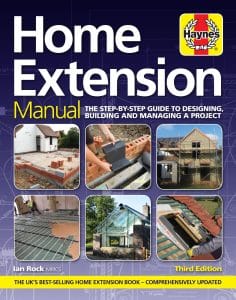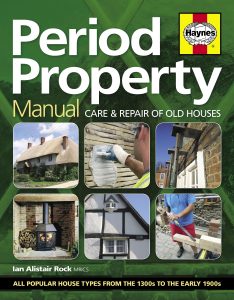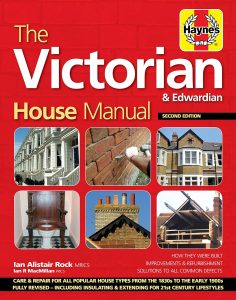Property Tips by Chartered Surveyor Ian Rock FRICS – from the Haynes House Manual series
What to do about
Hidden legal nasties
Getting a home survey before you buy should alert you to problems in the property you’re buying as well as any issues in the gardens, grounds and even in the surrounding area.
But not all bad stuff is visible to the naked eye no matter how experienced your surveyor. This is where your conveyancer should be carrying out ‘due diligence’ on your behalf to alert you to hidden restrictions that could stop you building an extension, or running a business, or that even give someone else the right to live there!
That said, because conveyancers never actually visit the property, the surveyor can play a key role acting as their eyes and ears on the ground. For example in a Homebuyer or building survey the surveyor would likely mention anything suspicious they’ve noticed, such as apparent rights of way over gardens, any unofficial occupants, troublesome neighbours, businesses run from the premises, aggressive dogs, foul smells, noisy flightpaths, traffic rat runs, parking problems etc.
You can then flag these up to your conveyancer who will quiz the vendors and find out more.
Restrictive covenants
Restrictive covenants are ‘promises not to do something’ contained in the original deeds.
Usually dreamed up by the original developers in an attempt to ‘preserve the tone of the area’, the general idea was to prevent future residents from partaking in unsavoury activities that could reduce values and take the area downmarket.
Should your search of the Charges Register turn up such a restriction, it may very well not matter.
If, for example, there are restrictions against ‘bone boiling and leather making’ or ‘the sale of intoxicating liquors’ – both commonly found in Victorian deeds – the chances are it won’t cramp your intended lifestyle too much. But restrictions on building extensions are also fairly common and can be more of an issue.
But surely the chances of an ancient restriction being enforced today are virtually zero, so why all the fuss?
The builder who made it is probably long dead, or the company concerned may no longer exist. Even if they are still alive and kicking, it would require them to spend money to enforce it, with no obvious benefit. If the grandson of the original builder has inherited the right to enforce it, he probably doesn’t know anything about it and couldn’t care less anyway.
But if the relevant person has disappeared or has ceased to exist, the law says that the requirement to get their consent before you break the restriction no longer applies.
The most common restrictive covenants
* Not to use the house for trade or business
* ‘No building or extension’ on the plot without the permission of the original developer
* Any house you build on the plot must be of a certain minimum value
* Not to do anything to cause a nuisance
Why this matters
Unfortunately there’s another scenario that’s potentially more problematic. If your house is located on an estate, then all the other houses will probably have the same restriction, and it’s sometimes possible that a neighbour could legally enforce the restriction. Of course there’s only a very slim chance that this could actually happen, but it’s still a risk, and your solicitors and mortgage lender won’t be inclined to turn a blind eye.
One possible solution is to trace the ‘covenantee’ who inherited the right to enforce, and persuade them (with a fistful of pounds) to get the legal restriction removed. Alternatively, once you’ve bought the land you can then apply to the Land Tribunal to have the restriction overturned, although this can sometimes be costly and difficult.
The usual solution is for the seller to pay a one-off premium to insure you and future owners against any risk of enforcement. Lenders will require such indemnity insurance to cover any possibility of a claim for breach of covenant.
The estate agent or solicitor will know which firms can insure against such risks. The snag is, sellers may not be exactly overjoyed at the prospect of having to cough up several hundred pounds to pay for this, and may dig their heels in.
Sometimes it turns out that a property is already in breach of a restrictive covenant, because the owners simply weren’t aware of any such limitations in the deeds.
Perhaps there’s a ‘no building or extending’ restriction, but the property has been extended. In such a situation, the first task is to discover how long the extension or building has been there. If it’s more than 12 years then the covenant should no longer be enforceable.
Despite this, ever cautious mortgage lenders will still require indemnity insurance if it’s less than 20 years old. The subject of enforceability of covenants is notoriously tricky, so legal advice is needed if you plan to do something that might infringe such a restriction.
Matrimonial homes
There is one other nasty little trap that the buyer’s solicitor has to watch out for. Where a married couple are selling a house, but the paperwork for the transaction only refers to the name of one person, then there’s always the possibility that their partner could have a claim for the property to be treated as a ‘matrimonial home’.
Where, for example, a husband is selling the property in his name, his wife may have already registered her right as a spouse to occupy the matrimonial home. Such rights are recorded at the Land Registry.
Should your search unearth such a matrimonial right, then before proceeding with the purchase both you and your mortgage lender will need formal written assurance that the spouse has agreed to withdraw their charge from the register.
Tenancies
In the vast majority of cases tenancies should be apparent when you or your surveyor inspect the property. But just in case you failed to spot the gang of Bolivian asylum seekers hanging out in the loft, there are other ways of getting to the truth. First, the seller has to provide details of all occupants right at the start in their answers to pre-contract enquiries. Second, the contract should provide for ‘vacant possession’.
In other words, your purchase is subject to all present occupants, including any tenants, moving out prior to completion, so that you’re free to move in immediately upon completion. If a tenancy is indicated then it’s up to the seller to take the necessary action to rid the property of the tenant.
However, before exchanging contracts you may justifiably want some reassurance that the tenant has departed for good, and hasn’t just disappeared off on a week’s shopping trip, to prevent potential problems delaying completion.
Depending on the type of tenancy, a court order may be required before an occupant can be evicted, and your purchase can proceed – which can obviously consume a lot of precious time, hence the need for your sharp-eyed legal team to check such matters as early as possible.
The Charges Register at the Land Registry will reveal any ‘long leases’ originally granted for more than 21 years. This would be the case, for example, where a freehold property has been split into a number of leasehold flats sold on long leases.
If the property you’re buying is held on a registered long lease then it means you’re actually buying the leasehold – not the freehold. Anything shorter would be classed as a ‘short tenancy’, with tenants renting the property.
See Rightsurvey.co.uk for a quick guide to survey prices
Check out our other posts for more info that will help you pay the right price for the right property.
We would always recommend using RICS certified surveyors in every instance – don’t get caught out, get instant quotes for RICS surveyors here.
Ian Rock’s Rightsurvey property tips are taken from the Haynes House Manual series.







